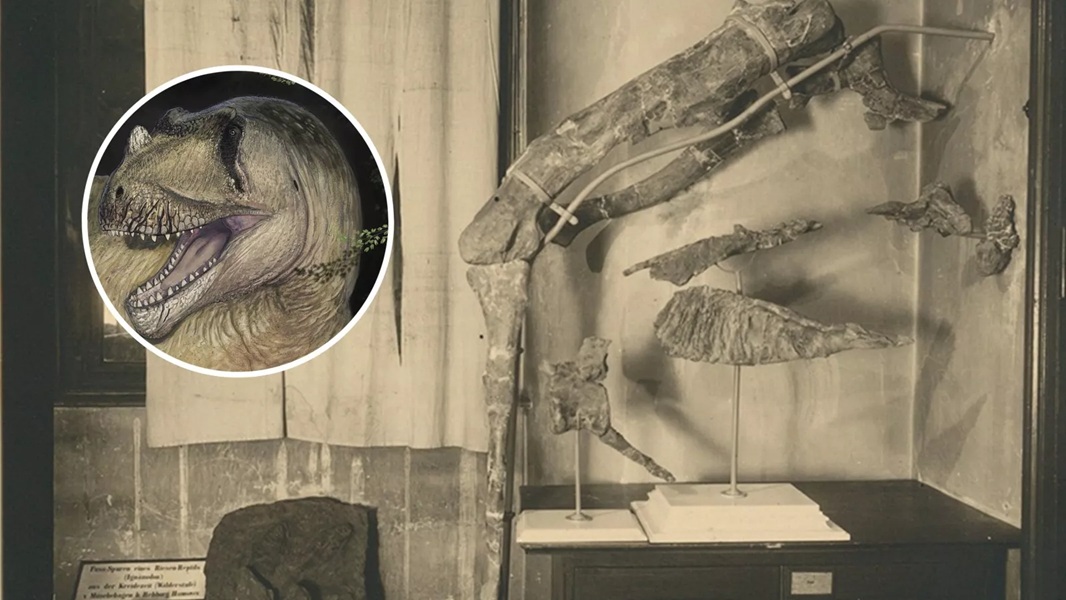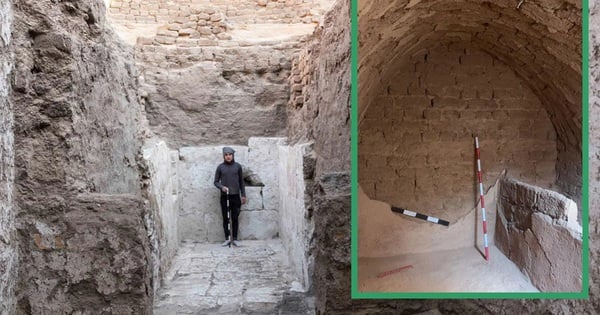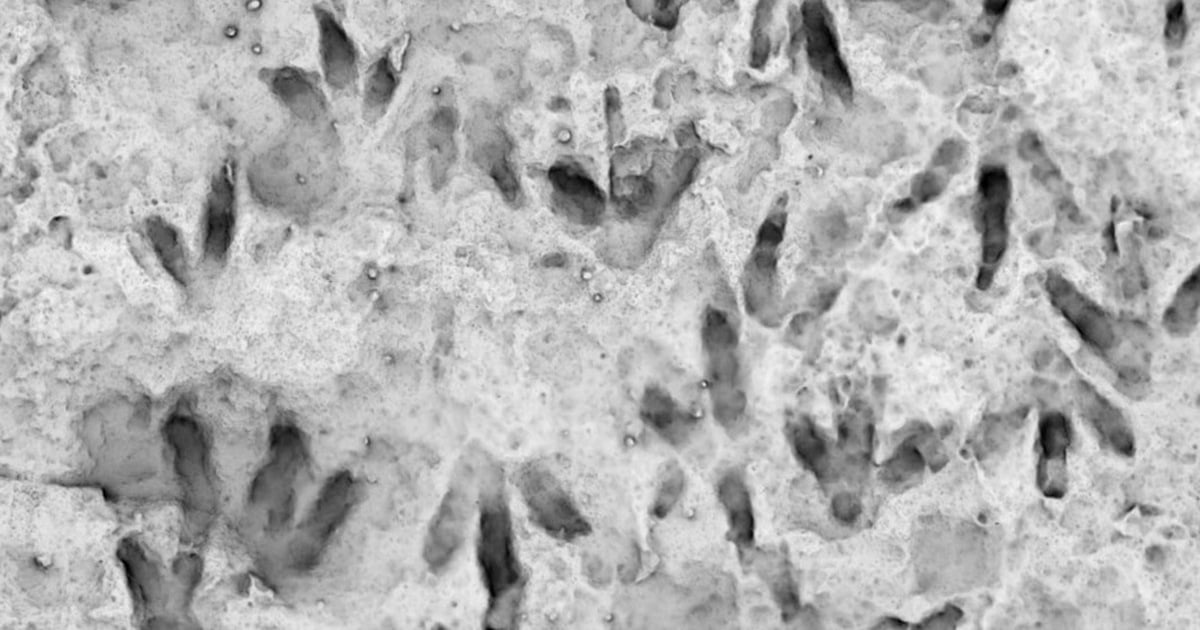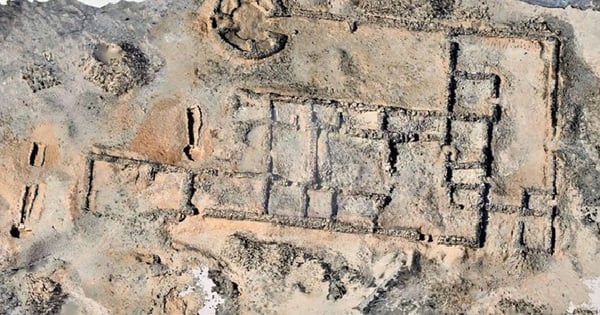(NLDO) - A monster species not yet recorded in the paleontological record once roamed the Sahara desert 95 million years ago.
According to Sci-News, the identity of a fearsome beast has been determined after more than a century of exposure in the Bahariya Formation, a fossil-rich area in the Bahariya Oasis , Giza Province - Egypt, a particularly lush area in the middle of the Sahara Desert.

Graphic depicting the portrait of the "Egyptian beast" and a photograph of its skeletal remains - Photo: Joschua Knüppe/Ernst Stromer von Reichenbach
Fragments of the beast's skull and other bones were excavated in 1914 and first described in 1931 by German paleontologist Ernst Stromer von Reichenbach.
At the time, it was thought to be a member of the Carcharodontosaurus dinosaur family, which had been discovered in Morocco.
The fossilized bones of the animal were later destroyed during World War II. But it was thanks to documents left by many researchers in the previous century that another team of researchers from Germany discovered something unusual.
“The Egyptian dinosaur fossils described are significantly different from more recent discoveries of Carcharodontosaurus in Morocco,” said Dr Maximilian Kellermann from Ludwig-Maximilians-Universität (Germany), a member of the research team.
Further analysis helped the team identify this historic specimen as an entirely new species belonging to the "shark-toothed heterosaurs" lineage Carcharodontosaurids.
The Egyptian beast was named Tameryraptor markgrafi. It was an extremely ferocious carnivore, measuring up to 10 meters in length when alive, with symmetrical teeth and a prominent nasal horn.
This 95-million-year-old creature is closely related to the Carcharodontosaurs of North Africa and South America, as well as to a group of Asian predatory dinosaurs called the Metriacanthosaurs.
“Perhaps, the dinosaur fauna of North Africa was much more diverse than we previously thought,” the authors said.
They believe that the Bahariya oasis and possibly a larger area of Giza province, on the banks of the Nile, may hold the secrets of a very crowded and vibrant world during the Cretaceous period.
The study was recently published in the scientific journal PLoS ONE.
Source: https://nld.com.vn/quai-thu-di-long-dai-10-m-lo-dien-o-giza-ai-cap-19625011909451253.htm


![[Photo] Prime Minister Pham Minh Chinh receives Mr. Jefferey Perlman, CEO of Warburg Pincus Group (USA)](https://vstatic.vietnam.vn/vietnam/resource/IMAGE/2025/4/18/c37781eeb50342f09d8fe6841db2426c)
































































































Comment (0)